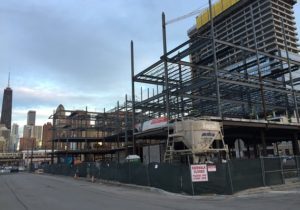The so-called absorption rate is declining.

Fresh data may confirm that the recent heyday for apartment construction is over.
Fewer newly-constructed apartments are being rented out, according to figures released early in December by the Commerce Department. The “absorption rate” — whether an apartment has been rented within three months of completion — was 58% in the second quarter of this year, down from 66% in the same period in 2015 — for a smaller pool of apartments.
That’s happening even as builders have been breaking ground on more single-family homes, and fewer multi-family. Through the first eleven months of 2016, multi-family starts are 4% lower than during the same period a year ago, while single-family starts are 11% higher.
Many economists want to see a stronger pace of single-family home building and buying, not just to ease supply shortages, but also as a barometer of a stronger economy and confidence in the housing market than the recent apartment boom has demonstrated.
Many Americans emerged from the downturn with dented finances and credit scores, not to mention negative views of homeownership, making it easier and more attractive to rent than buy. Mortgage lending is strict, and even small down payments have been hard to scrape together for many young people, especially as rental costs surge.
For many homeowners, equity and home values were pummeled, giving them little incentive to list their homes for sale. Tight housing inventory has pushed prices higher, favoring sellers.
And demand for rentals is likely to continue to grow, analysts believe, even as those cyclical trends ease. The massive baby-boom generation is renting more than earlier generations did at their age. Increasing ethnic diversity will likely mean more renting than buying.
Builders responded to those trends by ramping up construction of multi-family buildings. (The National Association of Home Builders, crunching Commerce Department data, found that about 92% of all multi-family units were built-for-rent in the third quarter, much higher than the 80% share in the two decades before the housing boom took off.)
On Friday, Commerce will report on November new home sales, data which only covers new single-family homes. The median forecast among economists surveyed by MarketWatch is for a 4% monthly increase, to a 583,000 annual pace of sales.
Like most metrics in the housing market, that would demonstrate slow and steady improvement, but still fall well short of sales volumes that the U.S. enjoyed even before the mortgage mania of the mid-2000s.
By: Andrea Riquier (MarketWatch)
Click here to view source article.


